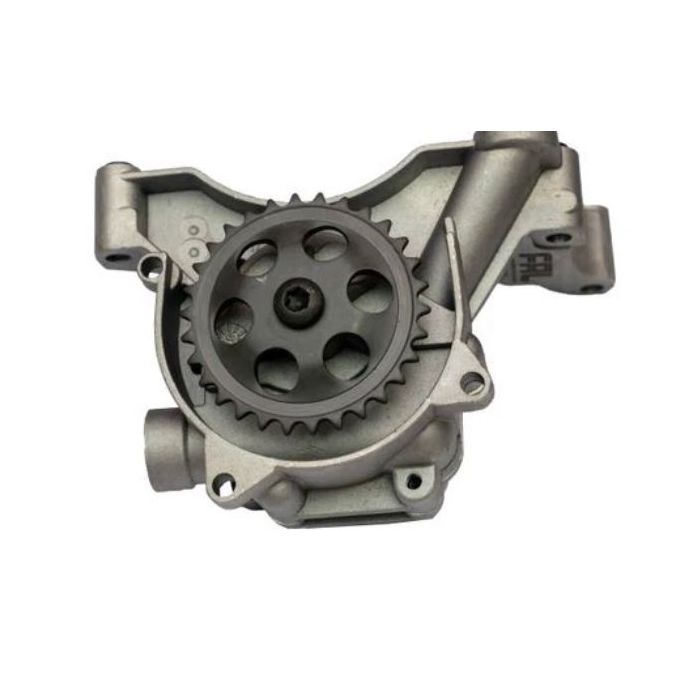Replace a state-of-the-art clp engine for better performance.
Replace a state-of-the-art clp engine for better performance.
Blog Article
How a Clp Engine Can Enhance Efficiency in Different Industries
The advent of CLP engines marks a significant shift in operational performance throughout numerous markets, driven by their capacity to optimize fuel usage and lessen downtime. Industries such as manufacturing and logistics stand to get considerably from their robust layout and regular power outcome, which promise to enhance operations and enhance performance. As companies increasingly focus on sustainability alongside efficiency, the duty of CLP engines comes to be even a lot more essential. What continues to be to be seen is just how these advancements will certainly shape the future landscape of industrial operations and their effect on more comprehensive financial patterns (clp engine).
Overview of CLP Engines
CLP engines, or Continuous Fluid Propellant engines, represent a substantial advancement in propulsion innovation, particularly for room applications. These engines utilize a continuous feed system that permits the sustained expulsion of propellant, bring about improved effectiveness and efficiency compared to typical solid or hybrid propulsion systems. By preserving a consistent circulation of fluid propellant, CLP engines can attain extra accurate drive control, which is vital for steering spacecraft in numerous goal circumstances.
The layout of CLP engines incorporates sophisticated materials and ingenious gas monitoring systems. clp engine. This leads to minimized weight and increased integrity, vital variables for long-duration room objectives. Moreover, the constant procedure minimizes the threat of combustion instability, a typical challenge in conventional rocket engines.

Advantages in Production
The production of Continual Fluid Propellant (CLP) engines provides a number of notable benefits that enhance both efficiency and cost-effectiveness. One of the main benefits is the streamlined manufacturing procedure, which reduces the intricacy related to typical propulsion systems. By using fluid propellant, manufacturers can achieve higher accuracy in engine performance, resulting in maximized energy output and reduced waste.
Additionally, CLP engines facilitate a higher degree of modularity, enabling easier integration right into numerous manufacturing lines. This versatility can considerably reduce preparations and improve overall operational flexibility. The use of CLP technology additionally tends to minimize the demand for extensive maintenance due to less relocating parts, which translates right into minimized downtime and operational prices.

Applications in Logistics
Leveraging Continual Fluid Propellant (CLP) engines in logistics supplies considerable advantages in operational efficiency and integrity. These engines provide a durable solution for different transportation needs, making it possible Website for the seamless activity of products across large distances. The inherent style of CLP engines permits consistent power outcome, which translates right into smoother and extra foreseeable transport schedules.
One of the vital applications of CLP engines in logistics is in heavy-duty products transportation, where they can drive both ground and aerial lorries. Their capacity to preserve high performance under varying lots problems guarantees that shipment timelines are met, thus boosting client fulfillment. In addition, CLP engines can be integrated into automated logistics systems, assisting in real-time monitoring and maximizing course planning.
In addition, the toughness of CLP engines reduces maintenance downtime, permitting logistics companies to optimize their operational capacities. This is particularly beneficial in warehousing operations, where performance in handling and carrying goods is essential. As logistics proceeds to advance, the assimilation of CLP engines stands for a forward-thinking technique that not just improves performance but likewise sustains the market's expanding needs for reliability and rate.
Influence on Energy Effectiveness
Exactly How do Continual Fluid Propellant (CLP) engines enhance energy performance in transportation? CLP engines make use of a consistent circulation of liquid fuel, optimizing combustion processes and maintaining a steady thrust result. This layout reduces energy losses related to traditional check burning engines, where fuel delivery can differ and bring about inadequacies.
The constant operation of CLP engines allows for a much more efficient thermal cycle, leading to higher specific impulse contrasted to standard engines. clp engine. This translates to reduced gas consumption for the exact same amount of work done, significantly decreasing operational prices across different transport industries, including air travel and maritime industries
In addition, the capability of CLP engines to maintain optimum performance under varying lots conditions minimizes the need for regular acceleration and deceleration, additionally improving fuel efficiency. Boosted energy performance not just adds to cost financial savings yet likewise leads to lower greenhouse gas emissions, lining up with international sustainability objectives.
Future Trends and Innovations
Arising innovations in Continual Liquid Propellant (CLP) engine modern technology guarantee to revolutionize the landscape of transportation effectiveness and sustainability. As sectors pivot towards greener alternatives, CLP engines stand at the forefront, incorporating innovative materials and style methodologies that enhance performance while lessening ecological effect.
Among the most encouraging trends is the fostering of hybrid systems that combine CLP engines with renewable resource resources. This harmony can maximize fuel consumption and minimize discharges, aligning with international sustainability goals. Additionally, innovations in computational fluid characteristics (CFD) are helping with the style of even more aerodynamically effective engines, leading to decreased drag and enhanced gas effectiveness.
Moreover, the growth of wise monitoring systems is readied to enhance functional effectiveness. These systems take advantage of information analytics and IoT innovation to maximize engine performance in real-time, making sure that the engines run within their most reliable parameters.
As research study proceeds to explore different propellant formulations-- such as biofuels and synthetic gas-- the future of CLP engines looks promising. By taking advantage of these innovations, markets can not just improve their effectiveness yet also contribute substantially to a cleaner, more sustainable future in transport.
Verdict
In conclusion, CLP engines represent a significant development in efficiency across multiple industries. The combination of sophisticated materials and fewer relocating components reduces maintenance needs, while placement with check that sustainability goals positions CLP engines as an essential innovation for the future.
Report this page